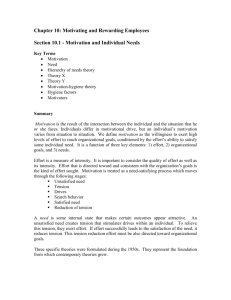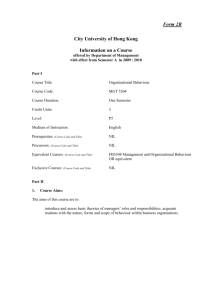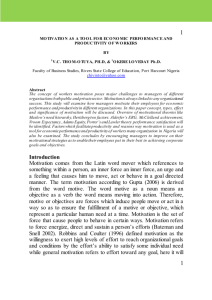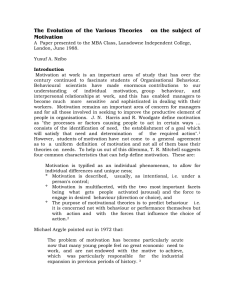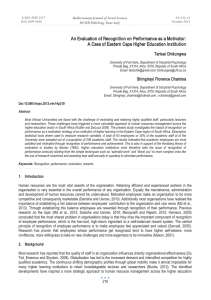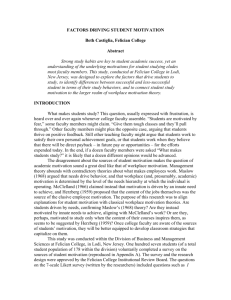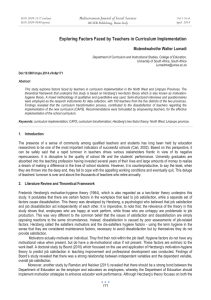Motivation
advertisement
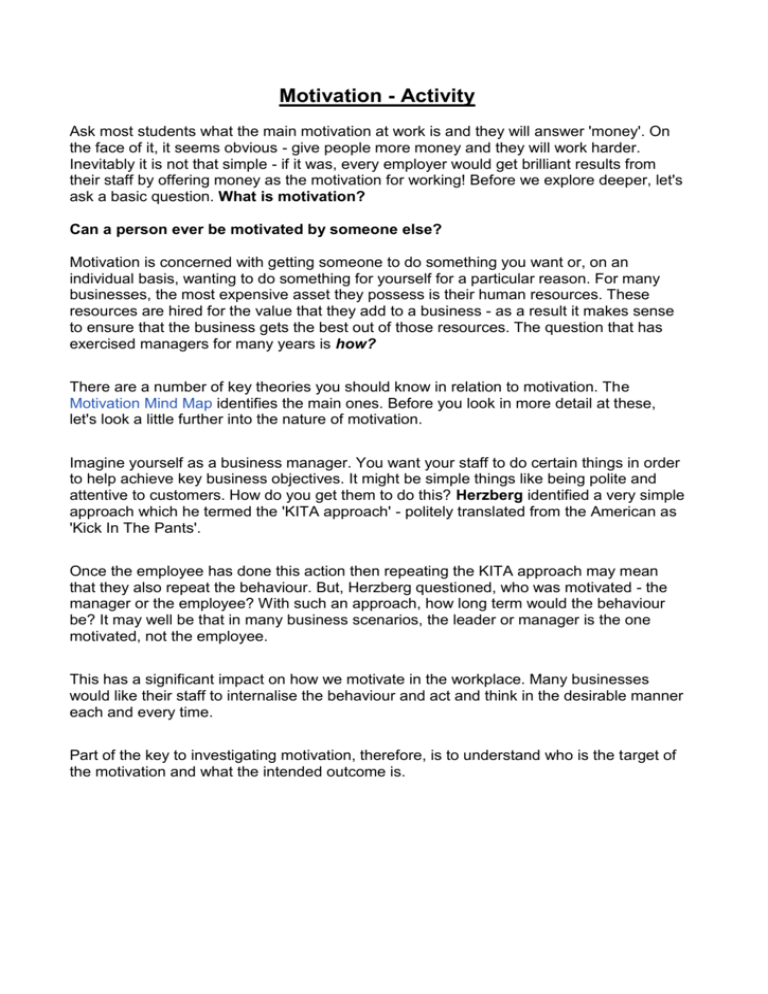
Motivation - Activity Ask most students what the main motivation at work is and they will answer 'money'. On the face of it, it seems obvious - give people more money and they will work harder. Inevitably it is not that simple - if it was, every employer would get brilliant results from their staff by offering money as the motivation for working! Before we explore deeper, let's ask a basic question. What is motivation? Can a person ever be motivated by someone else? Motivation is concerned with getting someone to do something you want or, on an individual basis, wanting to do something for yourself for a particular reason. For many businesses, the most expensive asset they possess is their human resources. These resources are hired for the value that they add to a business - as a result it makes sense to ensure that the business gets the best out of those resources. The question that has exercised managers for many years is how? There are a number of key theories you should know in relation to motivation. The Motivation Mind Map identifies the main ones. Before you look in more detail at these, let's look a little further into the nature of motivation. Imagine yourself as a business manager. You want your staff to do certain things in order to help achieve key business objectives. It might be simple things like being polite and attentive to customers. How do you get them to do this? Herzberg identified a very simple approach which he termed the 'KITA approach' - politely translated from the American as 'Kick In The Pants'. Once the employee has done this action then repeating the KITA approach may mean that they also repeat the behaviour. But, Herzberg questioned, who was motivated - the manager or the employee? With such an approach, how long term would the behaviour be? It may well be that in many business scenarios, the leader or manager is the one motivated, not the employee. This has a significant impact on how we motivate in the workplace. Many businesses would like their staff to internalise the behaviour and act and think in the desirable manner each and every time. Part of the key to investigating motivation, therefore, is to understand who is the target of the motivation and what the intended outcome is. Your Task: You are going to do some investigation into motivation theories - some of these theories were originally developed many years ago, so you might need to think about how relevant they are to modern business environments. 1. This BBC article, 'Motivating your staff', gives you an idea about different approaches to motivation. Now consider the examples below and evaluate an appropriate motivational technique that could be applied to help solve the problems identified. o McGregor o McClelland o Mayo o Maslow o Herzberg Case A You are a manager of the regional office of a firm in the service sector involved with organising hospitality events for corporate clients. The slowdown in the economy has led to a reduction in companies' entertainment budgets, which has resulted in falling sales. The Head Office are contemplating merging regional offices. The outcome would necessitate staff from your office re-locating to an office 20 miles away if they wanted to retain their posts. Image copyright: Georg Ehl, stock.xchng In any event, there are likely to be redundancies amounting to 15% of the current staff, which numbers 55. The Head Office have made it clear that more aggressive sales techniques are going to be required to help boost sales to prevent more jobs from being lost in the future. Case B You are the manager of the fresh produce department at a large supermarket on the outskirts of a major UK city. You have steady sales figures, whereas the rest of the departments in the store have sales figures that have been rising. You have a wide range of staff working for you - a total number of 32 - but only two are full time and both had taken early retirement from their lifetime careers. Image copyright: Jelmer Rozendal, stock.xchng The remaining staff consist of working mothers, students - primarily from the local Further Education (FE) college - and a string of part-time workers sent from the local job centre. The latter group do not have any specific desire to work in a supermarket but need to show that they are willing to take jobs offered in order to ensure they secure benefits. Often they will leave after a couple of weeks. You have heard rumours that you are to be 'questioned about the disappointing trend in your sales figures' and expected to at least meet the figures experienced by other departments in the store.



